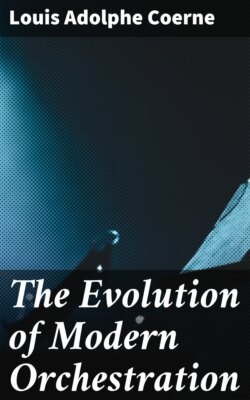Читать книгу The Evolution of Modern Orchestration - Louis Adolphe Coerne - Страница 26
VI.
ОглавлениеWhile examining the progress of orchestration, the parallel growth of organ and clavier music should not be forgotten. A comprehensive glance at the series of important writers in these branches will suffice to refresh the memory.
A distinctive style, initiated by the earlier Italian composers, Merulo, Andreas and Giovanni Gabrieli, was first exploited by Frescobaldi (1583). He promulgated a novel style of organ playing and contributed to the development of the fugue. After him, organ composition became the prerogative of the Germans, and the seventeenth century is represented by Scheidt, Froberger, Kerl, Reincken, Buxtehude, finally Pachelbel (1653). In Germany, Italy, and France, the subsequent chief exponents of clavier music were respectively Kuhnau, Domenico Scarlatti, and Couperin. Coincidentally, all three were born in the same decade as Bach.
By thus comparing the prodigious activity displayed in every branch of music, we find, as the ultimata of this epoch, that homogeneity in general had given place to a system of related tonalities, vitalized rhythm, diversified figuration, and a rational mode of expression. Moreover there were two distinct elements to build upon,—polyphony, as embodied in the contrapuntal sonata da chiesa, and the popular dance, the pivot of the sonata da camera. These two styles were capable either of further unassociated development or of reconciliation. By still further adding to such an amalgamation the principle of reiteration and thematic development of a single thought as the motive for a composition, we have as a resultant the cyclic form—first the Suite, earliest of complex forms, then the Sonata.
Musical art was now ready for a master hand who should weld its component parts firmly together. And that master was Bach.
